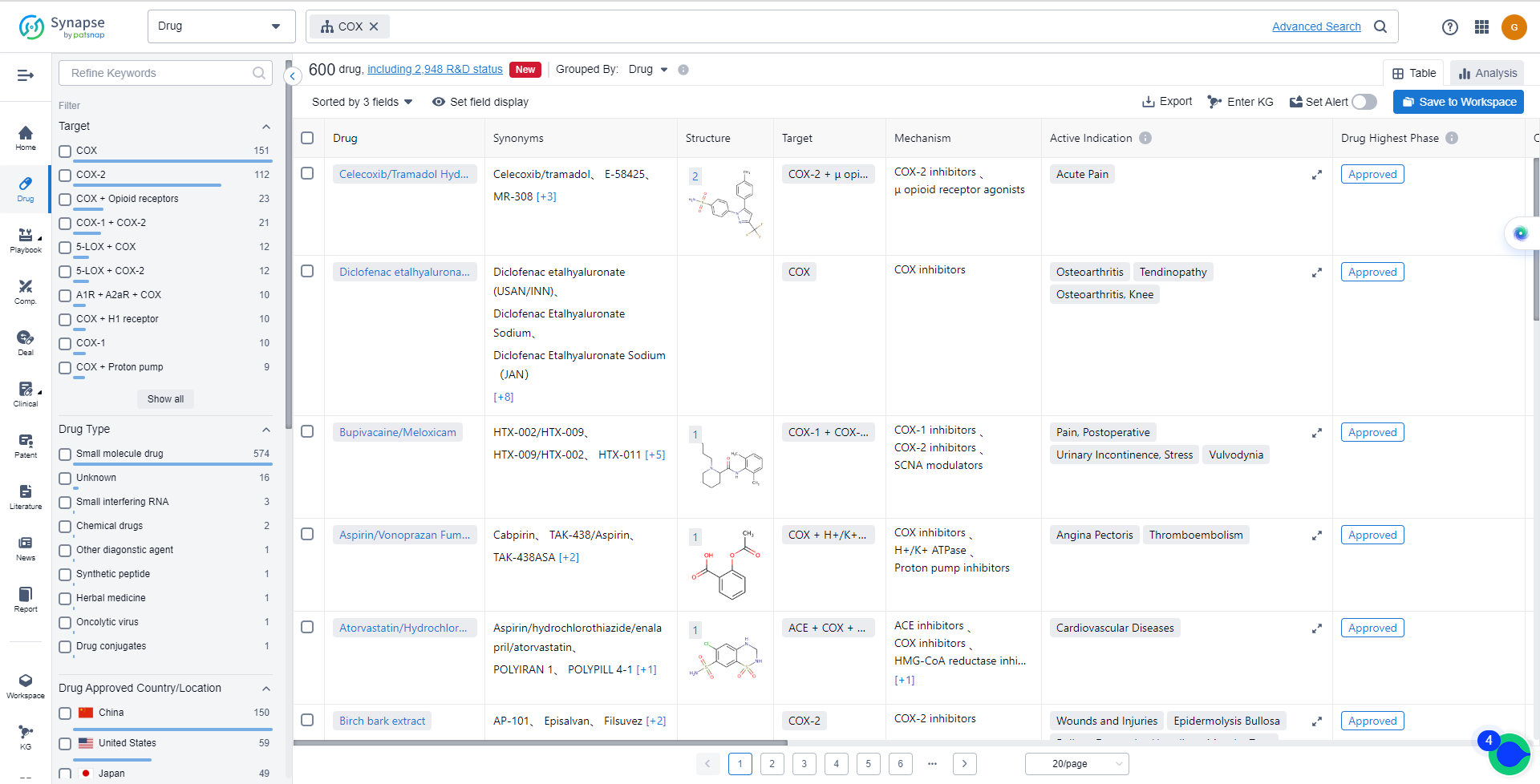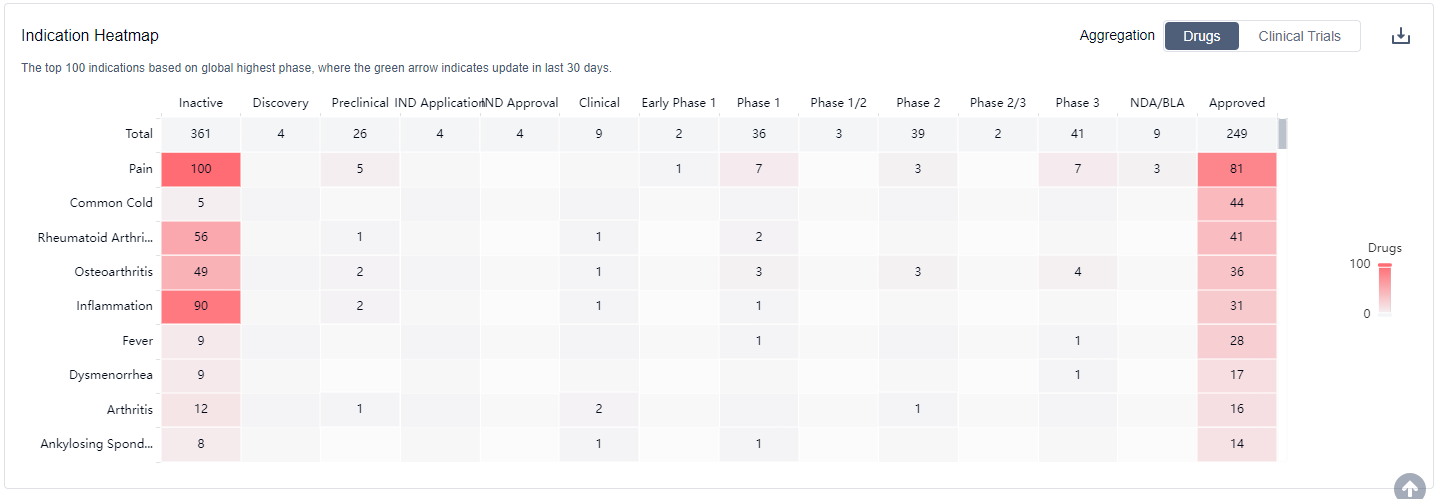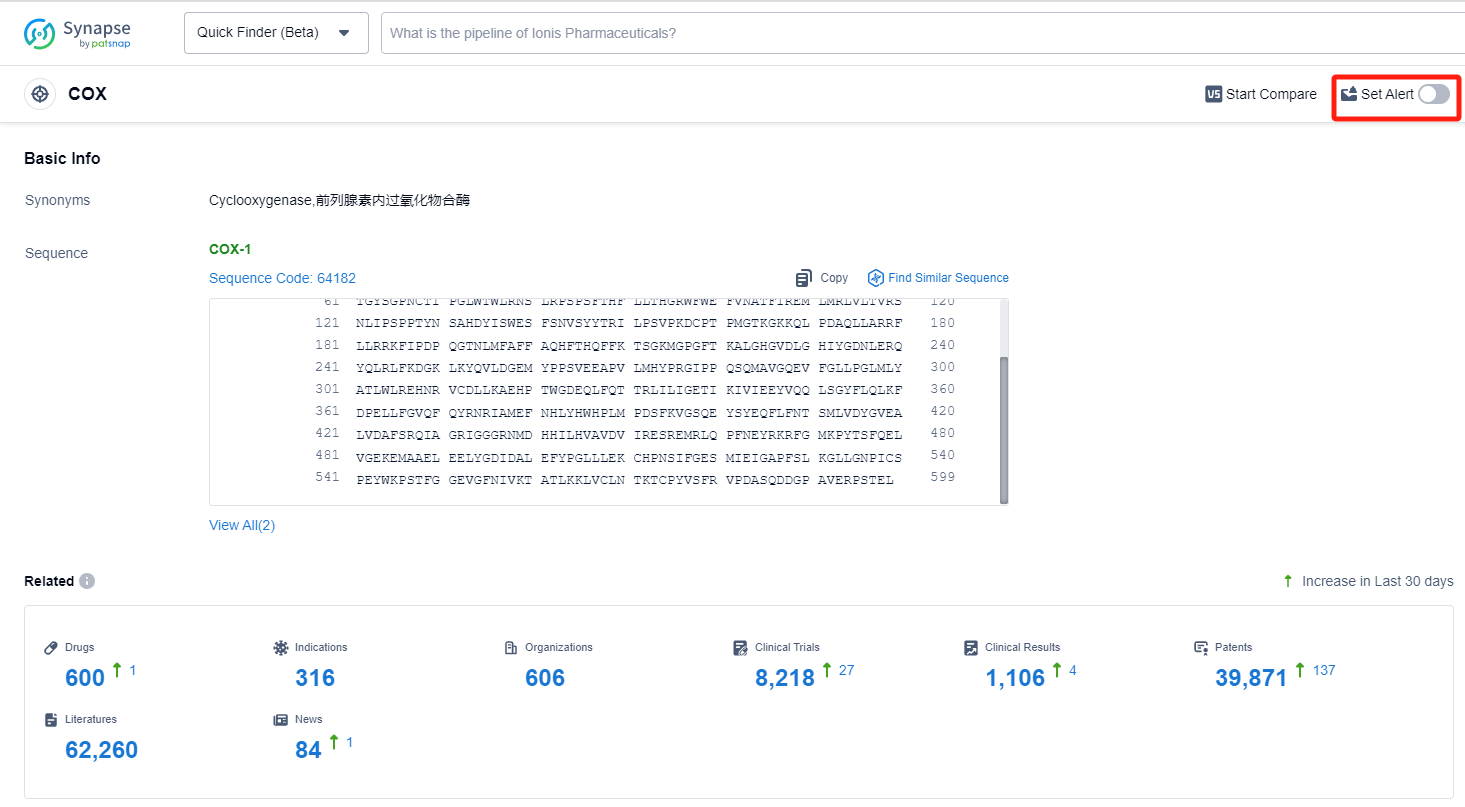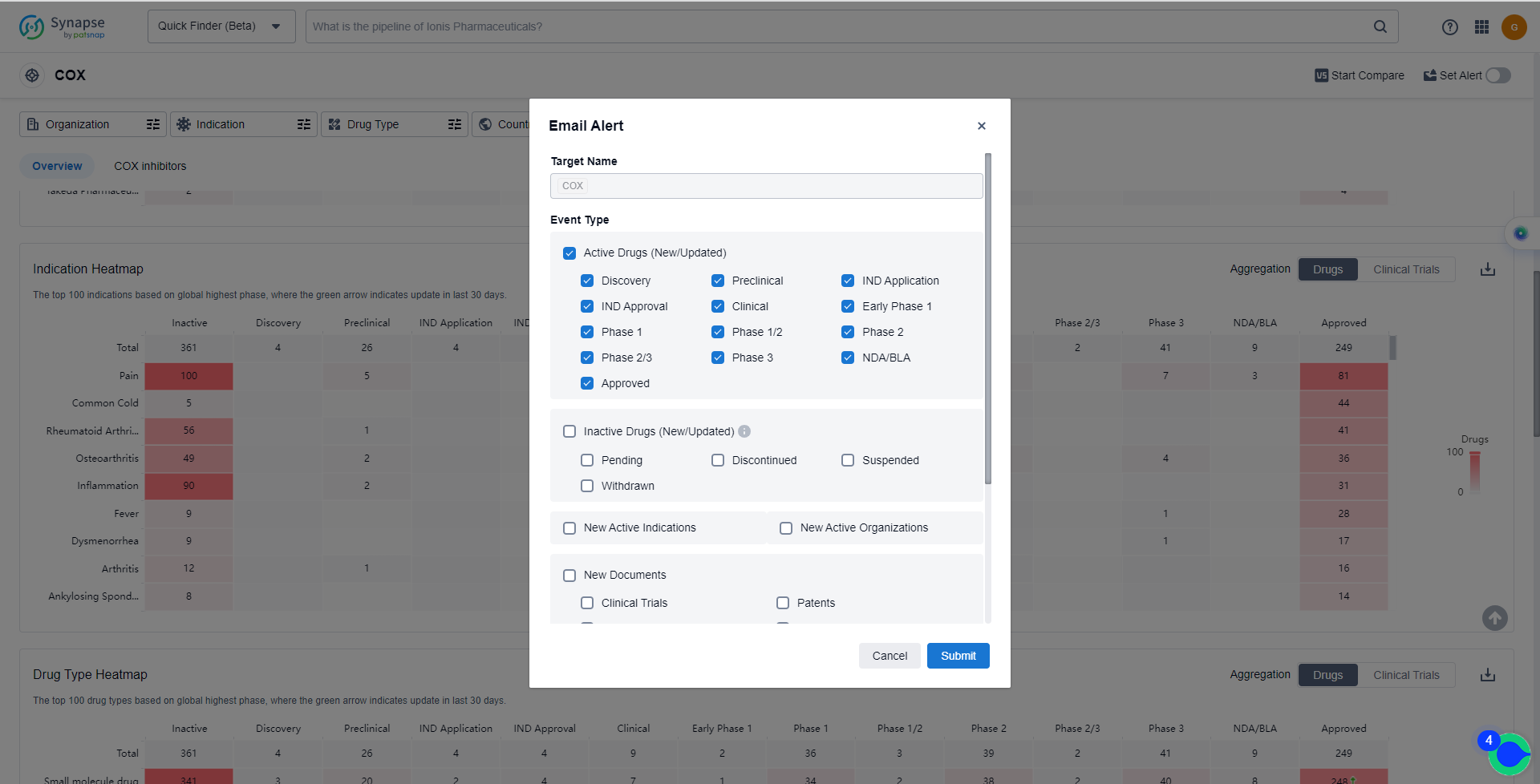What are COX inhibitors and how do you quickly get the latest development progress?
COX, or cyclooxygenase, is an enzyme that plays a crucial role in the human body's inflammatory response. It is responsible for the production of prostaglandins, which are hormone-like substances involved in various physiological processes. COX exists in two isoforms, COX-1 and COX-2. COX-1 is constitutively expressed and involved in maintaining normal bodily functions, such as protecting the stomach lining and regulating blood clotting. On the other hand, COX-2 is induced during inflammation and is primarily responsible for the production of prostaglandins that cause pain, fever, and swelling. Understanding the role of COX has led to the development of drugs called COX inhibitors, which are used to manage pain, inflammation, and other related conditions.
COX inhibitors, can be categorized into two main types. The first are non-selective COX inhibitors, which can simultaneously inhibit both COX-1 and COX-2 enzymes, with Aspirin being a primary example. The second type involves selective COX-2 inhibitors, such as celecoxib, which was the first COX-2-specific inhibitor approved by the FDA for use in the treatment of familial adenomatous polyposis (FAP).
There are two isozymes of cyclooxygenase, namely COX-1 and COX-2. COX-1 is an always-present enzyme in different tissues, including the stomach lining, platelets, and kidneys. On the other hand, COX-2 is an enzyme generally induced in the context of inflammation or tissue healing. Extensive research indicates that most tumors overexpress COX-2, while the expression of COX-1 shows no significant discrepancies between tumorous and normal tissues. Therefore, studies focusing on the role of cyclooxygenase in tumor progression primarily concern COX-2.
The analysis of the target COX reveals a competitive landscape with several companies making progress in the development of COX inhibitors. GSK Plc, Viatris Inc., and Pfizer Inc. are among the companies growing fastest in this area. Pain, rheumatoid arthritis, and osteoarthritis are the most common indications for approved drugs. Small molecule drugs are progressing rapidly, indicating intense competition in the development of innovative drugs. China, the United States, and Japan are the leading countries/locations in COX inhibitors development. Overall, the target COX presents opportunities for further research and development, particularly in addressing pain management and rheumatic conditions.
The mechanism of action of COX inhibitors
COX inhibitors are a type of medication that inhibit the activity of cyclooxygenase (COX) enzymes. These enzymes play a crucial role in the production of prostaglandins, which are chemical messengers involved in inflammation, pain, and fever. COX inhibitors work by blocking the action of COX enzymes, thereby reducing the production of prostaglandins.
From a biomedical perspective, COX inhibitors are commonly used in the treatment of pain, inflammation, and fever. They are widely prescribed for conditions such as arthritis, menstrual cramps, headaches, and post-operative pain. By reducing the production of prostaglandins, COX inhibitors help alleviate symptoms associated with these conditions.
There are two main types of COX inhibitors: COX-1 inhibitors and COX-2 inhibitors. COX-1 inhibitors, such as aspirin, naproxen, and ibuprofen, inhibit both COX-1 and COX-2 enzymes. They are effective in relieving pain and inflammation but can also cause side effects such as stomach ulcers and bleeding.
On the other hand, COX-2 inhibitors, such as celecoxib, selectively inhibit the COX-2 enzyme while sparing COX-1. This selective inhibition reduces the risk of stomach ulcers and bleeding associated with COX-1 inhibitors. COX-2 inhibitors are commonly used for long-term management of chronic conditions like osteoarthritis and rheumatoid arthritis.
In summary, COX inhibitors are a class of medications that inhibit the activity of COX enzymes, reducing the production of prostaglandins. They are commonly used to treat pain, inflammation, and fever, with different types of COX inhibitors offering varying degrees of selectivity and side effects.
List of COX Inhibitors
The currently marketed COX inhibitors include:
- Celecoxib/Tramadol Hydrochloride
- Diclofenac etalhyaluronate
- Bupivacaine/Meloxicam
- Aspirin/Vonoprazan Fumarate
- Birch bark extract
- Prasugrel Hydrochloride/Aspirin
- Diclofenac/Lidocaine
- Esflurbiprofen
- Aspirin Zinc
- Polmacoxib
For more information, please click on the image below.
What is the purpose of using COX inhibitors?
COX inhibitors are commonly used for conditions such as angina, atrial fibrillation, arrhythmia, and myocardial infarction.For more information, please click on the image below to log in and search.
How to obtain the latest development progress of COX inhibitors?
In the Synapse database, you can keep abreast of the latest research and development advances of COX inhibitors anywhere and anytime, daily or weekly, through the "Set Alert" function. Click on the image below to embark on a brand new journey of drug discovery!








